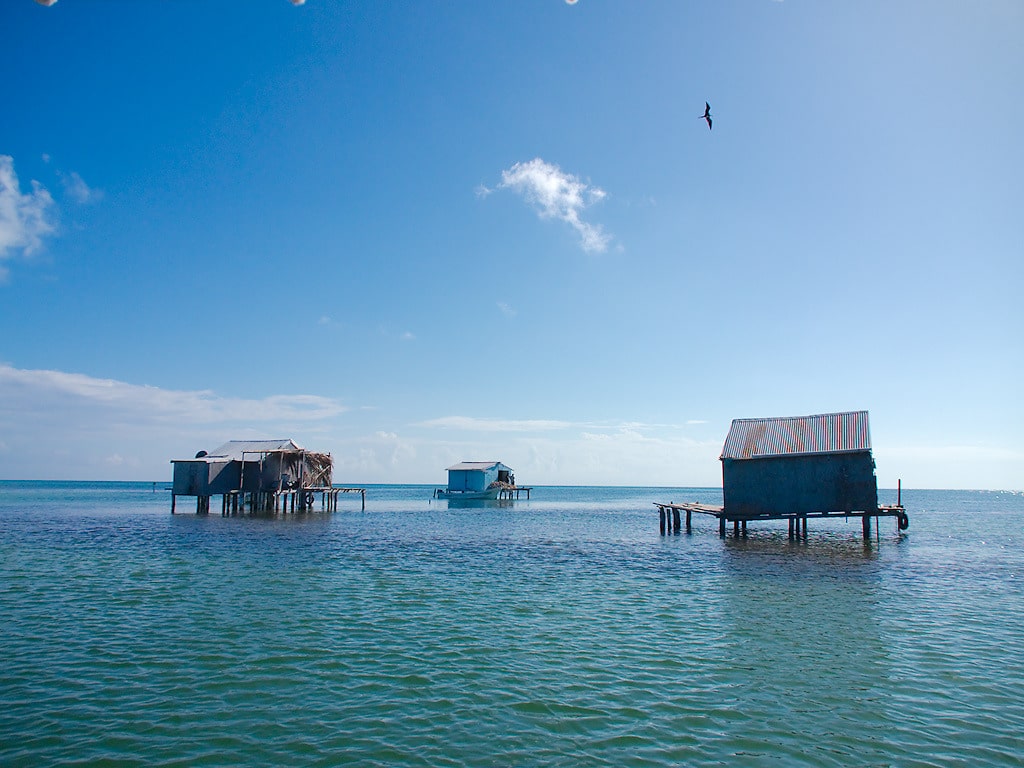Banco Chinchorro Atoll

Thanks to its tropical climate, which allows the existence of multiple ecosystems, the Mexican government has declared large areas of jungle and reefs as ecological reserves. One of them, little visited by tourists, who prefer to spend their vacations in places like Cancun, Isla Mujeres, Playa del Carmen or Punta Allen, is the Banco Chinchorro Atoll Biosphere Reserve.
For nature lovers
This natural protected area is located 30 kilometers off the coast of the town of Mahahual, near Chetumal. It covers an extension of 370,000 acres, formed by a mosaic of open water, vegetation, beaches and coral reefs. It is the largest reef bank of the Great Mayan Reef.
Coral reefs
There are three small cays: Cayo Norte, Cayo Centro and Cayo Lobos, ranging in size from less than one kilometer to 5 square kilometers and there are no permanent human settlements. The water inside the barrier reef is 3 to 5 meters deep and the dive sites outside the barrier reef vary from 10 to 30 meters deep.
To get here, it is necessary to make a trip of about an hour and a half in shark boats.
Once there, diving and snorkeling can be practiced perfectly, besides most of the dive sites run along the reef walls, so the sites offer the opportunity to have shallow depths for any of these activities.
Once inside its waters, you will be able to admire all the beauty of the marine fauna of the place, such as multicolored fish, urchins, snails, crabs, sponges and large corals.
Banco Chinchorro Atoll: Last resting place of ships
Despite the beauty of its waters, this site has also been the nightmare of countless ships that have run aground in Chinchorro after a storm or lost their way.
Since colonial times, between the 16th and 18th centuries, sailors sailing from Cartagena, Colombia, to Havana, and then on to Spain, had to be very careful when crossing this area.
The currents and prevailing winds in the Caribbean forced them to pass close to this great reef, and although they tried to keep their distance, many ended up crashing against its coral walls. The remains of at least eighteen ships have been found sunk there between 1600 and 1800.
Banco Chinchorro Atoll: A diving paradise
But despite technological advances, many modern ships have also succumbed. Covered in rust and seagull droppings are the wrecks of the Glenview, a large British freighter sunk in 1960, and not far away, the Ginger Scout, as well as other ships such as the Cassel, the Far Star, the Tropic, the Huba and the San Andreas.
And on dry land
Back in Mahahual, you can spend the rest of the day sunbathing and getting an even tan. Its almost virgin beaches will give you a few hours of calm and tranquility. If you want to delve into the Mayan culture, you can head for Chacchoben, a Mayan enclave that extends over 70 hectares of land and where you will learn about the process of latex extraction and the production of chewing gum.
